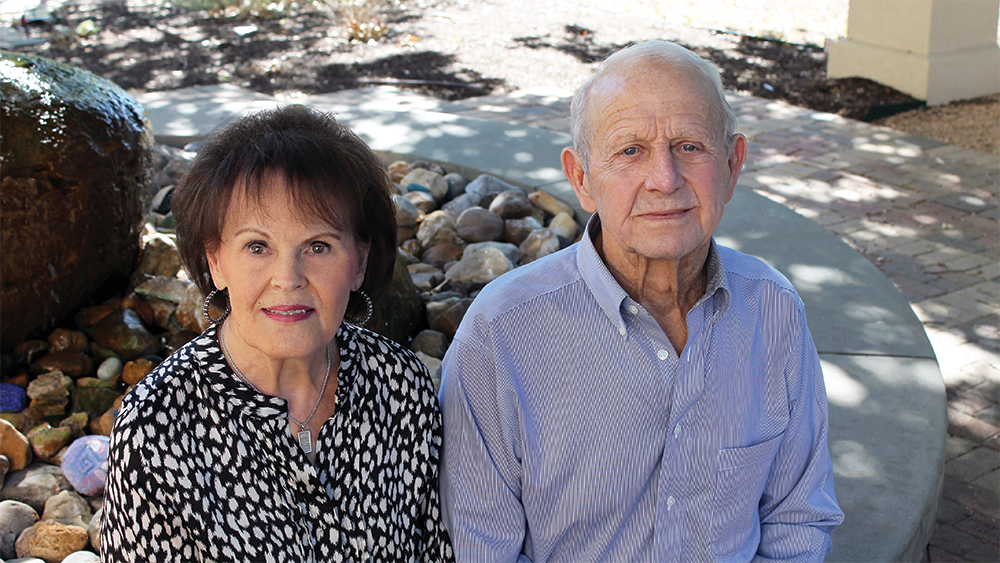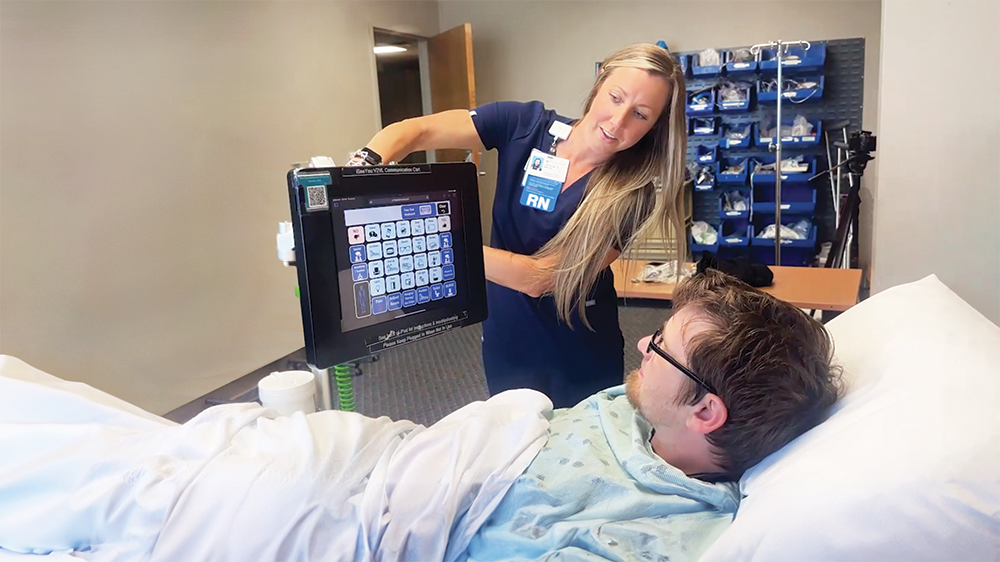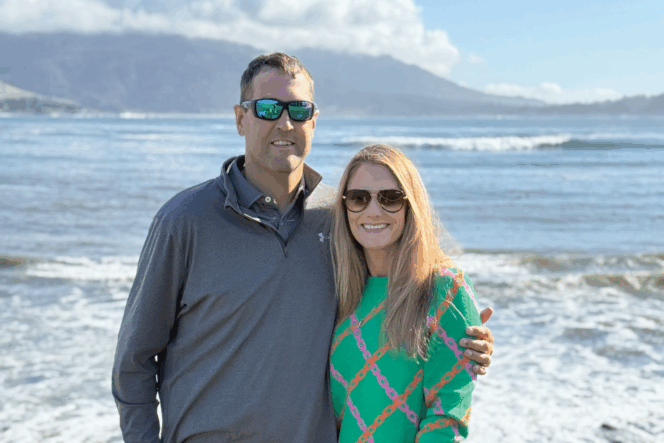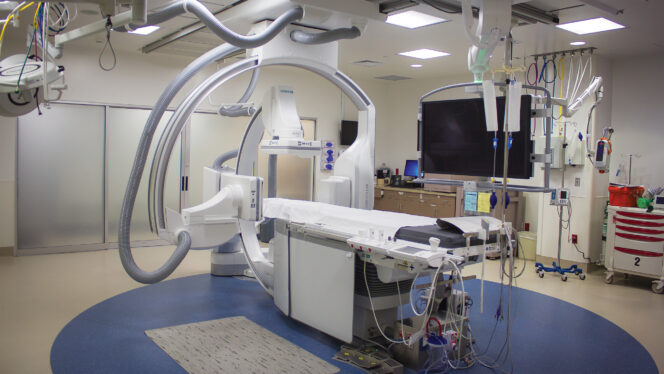In this Article
On an evening in the fall of 2019, speech-language pathologist Jordan Hanson carefully stacked books on a bedside table to prop up the eye-tracking communication device he was using to communicate with a patient on a ventilator.
In this Article
Once the device was calibrated, there was a momentary breakthrough as the patient spelled S-I-S. Hanson asked the patient for confirmation he wanted to call his sister on the phone, prompting the patient to jerk excitedly—which caused the device to fall over.
“He started bawling,” Jordan recalled. “We’d lost the opportunity. I said I’d be back the next day and we’d call her. When I came in the next day, they told me he’d died. That was the moment I knew we had to figure out something better than this.”
Anything from a ventilator to a traumatic injury could prevent a patient from speaking, which can be frustrating for both the patient and caregiver and can even hinder patient care. While much can be addressed with having a patient write out their needs, it is slow, inefficient and not always possible.
“The devices and tools we use to overcome this are often too simple or too specialized,” said Rob Patton, Magnet program coordinator at Baylor Scott & White Medical Center – Temple. “Nurses could learn to use a dozen different communication apps and assistive devices and still never meet the wide variety of our patients’ communication needs.”
Jordan and Rob are part of the team—along with Dr. Marlene Porter, Crystal Sokolowski, Adan Torres, Jr. and executive sponsor Dr. Donna Anderson—that developed a new platform to help speech-impaired patients communicate with their care providers. The prototype—called Voice to the Voiceless—went live in May 2023 when a patient successfully communicated that he wanted his wife and was able to tell her “I love you.”
“I have seen so many patients pass away, with the feeling I failed to give them a voice,” Jordan said. “I finally felt like I hadn’t failed somebody. This project is an homage to all those patients I wasn’t able to help.”
“We’ve only done prototype testing so far, but already our nurses are telling us they need it,” Rob said. “Patients and families have said they love it. We’re proud of the work we’ve done to bring a voice to the voiceless, and we can’t wait to see what’s next.”
Next steps
Voice to the Voiceless has the potential to transform the healthcare experience for patients with a variety of communication barriers that prevent them from effectively interacting with care providers and loved ones. The team estimates that 20% of ICU patients could benefit from the platform, as well as patients of other departments throughout the hospital, including those who are hearing impaired or experience language barriers.
“There really isn’t an area of healthcare that would not benefit from having Voice to the Voiceless at their fingertips,” Rob said. “This could be a global change to the standard of care.”
The current prototype is pieced together using a website and a shortcuts app, accessible by a tablet on a custom-built adjustable cart. However, the workflow isn’t seamless yet and requires someone already familiar with the system—and with protocols of the ICU—to deploy it with a patient and troubleshoot if issues arise. This limits the team’s ability to collect data demonstrating the system’s effectiveness and hinders broad implementation throughout the hospital.
How your gifts can help
- Support the development of a Voice to the Voiceless app that will integrate with different devices, featuring a user-friendly interface that any provider can utilize in a patient care setting
- Fund hardware and equipment for broad implementation, including custom-built carts and tablets with eye-gaze technology
- Support implementation staffing and development of training materials







